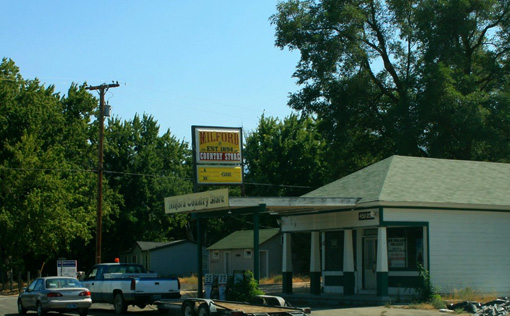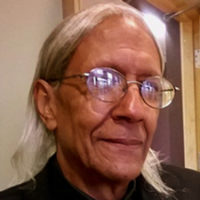
I must preface this column with a loathsome quote from California Governor Peter W. Burnett in 1851: “That a war of extermination will continue to be waged between the races until the Indian race becomes extinct must be expected.”
Recently at UC-Sacramento, history professor Maury Wiseman reportedly told his class that Native Americans in 19th century California did not face “genocide” because that “implies it was on purpose and most Native people were wiped out by disease.” (In California, history bears out that Indians did not get the opportunity to die by disease because of genocidal massacres by Euro-Americans.)
His statement was strongly disputed by Native American (Maidu/Navajo) student Chiitaanibah Johnson, a 19-year-old sophomore. They disagreed and the conversation became heated and Wiseman dismissed the class early. Shockingly (to this writer), according to Johnson, other students defended the professor.
The disagreement between Johnson and Wiseman has sparked a national debate on how American Indian history is taught in general and how California Indian history is taught in particular.
But, back to Professor Wiseman-was he aware of the statement of the sanguinary Governor Burnett, advocating genocide? Burnett announced a clear, hideous, unmistakable policy of extermination, perhaps the clearest of any state executive in American history. In fact, to my knowledge this is the most unabashed advocacy of extermination directed against Native Americans by a governor in the blood-soaked annals of U.S. racial murder. For although, the genocide train terrifyingly roared from coast to coast, with murderous, bloodthirsty conductors demagogically yelling “all aboard the Indian killing express” to a land-hungry white populace, leaving millions of dead, torn and mangled Native bodies in its historic wake, 19th century California officialdom singularly stands in a racist category by itself for its destruction of a hapless Indigenous population.
In 1852 the California legislature paid $1.1 million to citizen militias to hunt and kill Native Americans. This mass killing was obviously “on purpose,” but what part of this does “historian” Wiseman not understand? Where lies his expertise in history? Obviously not in California history, for Indian history is California history, a history covered knee-deep in blood and gore.
In the Gold Rush era white American settlers began hunting and killing Native people for sport, often using dogs to pursue terror-stricken Indian families. These “hunters” wrote extensively of their murderous deeds. A poignant example is given by an Indian killer in Northern California: “Dodging and ducking through the thickets like frightened deer, I brought down one with a shot from my double-barrel, but he was up and streaking it (sic) through the brush before I could lay hands upon him. Several of us followed him for half-mile or more before we finished him.”
Organized companies of Euro-American males often bragged of the number of Indians they had murdered. A Baptist missionary, Lee Thayer, writing in 1922, recounted atrocities:
“Ezekiel Merrit, Commander of the Bear Flag Party, boasted nearly one hundred notches on his tomahawk handle, his record of Indian kills. Indian villages were used as targets for rifle practice and Indians were wantonly destroyed by the wholesale.”
The newspapers were open advocates of genocide, as shown by the Yreka Herald of 1853:
“We hope that the government will render such aid as will enable the citizens of the north to carry on a war of extermination until the last red…ns of these tribes has been killed. Extermination is no longer a question of time – the time has arrived, the work has commenced and let the first man who says treaty or peace be regarded as a traitor.”
In 1859, the state Superintendent for Indian Affairs reported that the mass killing of Indian people by armed militias was a daily occurrence. He warned that if this continued the Native population would soon be exterminated.
These savage, yes, savage, attacks were carried out with the financial support of the state and federal governments, for the express objective of extermination-horrific genocide. Women and children were more often than not killed with clubs, hatchets and knives. One of the ringleaders of a bloodthirsty militia gang boasted that he had killed 60 infants with his own hatchet.
Let’s take a deeper statistical look at just what the extermination meant in sheer numbers. A few examples shall suffice. In 1848, the California Indian population stood at over 150,000. A scant eight years later in 1856, the Native population had plummeted to a mere 25,000. This was the result of wholesale, nonstop, recurring mass murders of men, women, children and the elderly on a scale without parallel even taking into account what was happening, and had happened, in other parts of the country. Remember the tragic, heart-wrenching story of Ishi, captured in 1911, the last of his tribe in Northern California. The rest of his people, the Yahi, had been the victims of the genocidal massacres. He died without being able to converse with another human being who spoke his Native tongue.
Native Californians from 1848 Gold Rush days onward were hunted like denizens of the forest, as if they were dangerous, wild beasts. A few more examples will suffice of the Euro-American slaughter of a beleaguered Indian population. Communities such as Honeylake and Maryville townships offered bounties for Native scalps. For some towns, scalps were not enough. Take for example, Shasta City, which paid $5 for each Indian head turned in at city hall in the same fashion that bounties were paid in other parts of the West for wolves hunted and killed. (One resident of Shasta City wrote of seeing men bringing mule trains to town with each animal laden with 10 to 12 Indian heads). The genocidal crimes of mass murder, rape and enslavement of California Indians escalated from the Gold Rush onward.
In the 1850s the California legislature passed the Government and Protection of the Indians Act (what a misnomer!) which permitted the indenture of any loitering (any Indian without a job working for a white man) or drunk (rich, white landowners enticed Natives to drink, had them jailed and then indentured to work on their farms) Indians and orphaned Indian children. (In one account a settler when asked by a magistrate how could he be sure certain Indian children were orphaned, as a result of their parents being killed, callously replied, “Because, I killed some of them myself.”)
Moreover, thousands of Native children not killed outright were sold into servitude-virtual slavery. Prices ranged from $60 for a boy to $200 for a girl or young woman, who were used for both labor and sex.
Telescoping time, I have often reflected on the irony that California is now considered mostly a bastion of liberalism when it had such incredibly bloody beginnings in its unequalled genocide of Indian people.
While many Euro-Americans apparently feel guilty about what happened to Native Americans (although they should look at the oppression that Native people still face), others for political reasons seek refuge in a state of racist denial, and some are just unredeemable racists. Into which category does Mr. Wiseman fall? He needs to come out of the dark, retrograde recesses of falsehood and teach American history as it really happened. He and his colleagues need to teach the truth so that the country may move forward. (The latest information is that the California state Department of Education is still in denial over its state’s genocide.)
The truth is that the worst, most horrific genocide of Native Americans in American history was perpetrated in 19th century California. Nothing in American Indian history can equal this malevolent maelstrom of mass murder. The massacres are too numerous to even begin to list in this column.
In the meantime, all praise to Chiitaanibah Johnson. Keep up the great work! Continue to speak up!
Photo: Modern day Honey Lake, California, which during the 19th century paid residents to go out and kill Native Americans. | City Data

MOST POPULAR TODAY


Zionist organizations leading campaign to stop ceasefire resolutions in D.C. area

Communist Karol Cariola elected president of Chile’s legislature

Afghanistan’s socialist years: The promising future killed off by U.S. imperialism

High Court essentially bans demonstrations, freedom of assembly in Deep South






Comments